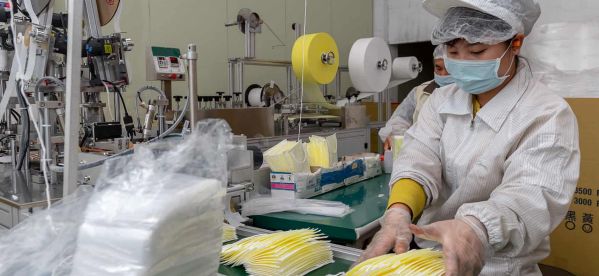By Kristine Catimbang, OSHAcademy Training Coordinator
The World Health Organization (WHO) warns the global shortage of personal protective equipment (PPE) will put healthcare workers at risk for contracting COVID-19 and other infectious diseases. Healthcare workers rely on PPE to protect themselves and patients from being infected. The global supply of PPE has been disrupted due to the COVID-19 outbreak. The outbreak has led to rising demand, panic buying, hoarding, and misuse (WHO, 2020).
Doctors, nurses, and other frontline workers are left ill-equipped and dangerously vulnerable to contacting and spreading COVID-19 to others. PPE shortages has left healthcare facilities and settings with limited access to supplies such as gloves, medical masks, respirators, goggles, face shields, gowns, and aprons. Without a secure supply chain, healthcare workers around the world are put at risk. PPE is one aspect of safe care of patients with COVID-19.
Shortages and demand have caused the PPE prices to surge since the beginning of the COVID-19 outbreak. The WHO has shipped 500,000 sets of PPE to 47 countries, but supplies are rapidly depleting. The WHO estimates that manufacturing PPE needs to increase by 40 percent to meet rising global demand. About 80 percent of all PPE manufactured globally comes from Asia, but large produces such as China, Taiwan, Thailand, and South Korea have decreased exports because manufacturing facilities in these countries have been adversely affected due to the outbreak. The WHO called on industry and governments to assist in increasing global PPE production to help contain the COVID-19 outbreak and protect those working on the frontlines. Governments could develop incentives to increase production of PPE. In the meantime, healthcare facilities and settings are advised to impose rational and appropriate use of PPE in order to manage and conserve stock until global supply increases. This method will also allow for hospitals and health systems to protect their stock on hand and refrain from panic-buying, which can further strain the supply chain.
Public health officials in the United States and other countries have repeatedly urged the public to avoid purchasing masks. It has been emphasized that masks do not offer the public meaningful protection from the COVID-19 virus; rather, these masks are meant to be utilized by medical professionals who are treating patients with infectious diseases (CDC, 2020). While shortages of masks are a well-known concern for the public and health workers, other PPE supplies are also increasingly under stress. Governments should act quickly and put measures in place to stop speculation and hoarding. It will be difficult for us to stop COVID-19 if we do not prioritize protecting health workers first.
References
Centers for Disease Control and Prevention (CDC). (March 2020). Healthcare Supply of Personal Protective Equipment. Retrieved from https://www.cdc.gov/coronavirus/2019-ncov/hcp/healthcare-supply-ppe.html
World Health Organization (WHO). (March 2020). Shortage of personal protective equipment endangering health workers worldwide. Retrieved from https://www.who.int/news-room/detail/03-03-2020-shortage-of-personal-protective-equipment-endangering-health-workers-worldwide










